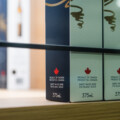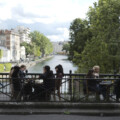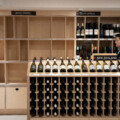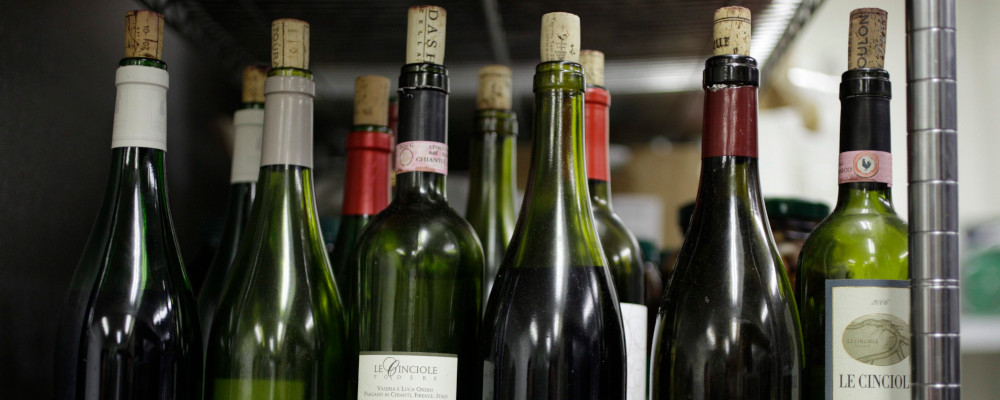The chief consolation to be drawn from cold weather is good warm food. On the hob or in the oven, in a pot or a roasting tray, good things bubble away, filling the kitchen with appetizing smells and the promise of providing the sustenance to bolster the physical and psychological strength required to survive the long winter in this country. Fortunately, hearty seasonal dishes also invariably pair well with wine, another important component of winter survival.
Some dishes don’t just go with wine, wine goes into them. The most striking example might be the chabrot of Southwestern France. In The Old World Kitchen: The Rich Tradition of European Peasant Cooking (1987) Elisabeth Luard describes chabrot in her recipe for soupe des vendanges, or Grape-Picker’s Soup.
The chabrot is the second course of a three-stage dinner, which begins with the broth of the soup served with bread and cheese and ends with a boiled dinner of the vegetables and meats cooked in the soup. Once the first course is finished, she instructs the host to place bottles of “strong red wine” on the table before the following:

“Fill each plate with very hot fat stock. Each person now adds as much red wine to his plate as he wishes, stirs it around, and then, to be strictly correct, drinks it straight out of the plate. This process is called faire chabrot. No southern-born French country man would miss it for the world.”
Most of us stick to keeping our wine in our glass at the table or actually cooking with it back in the kitchen. When I began my foray into lifestyle journalism, a long time ago, I made the mistake of asking a famous restaurant chef for advice on cooking with wine. The perennial question being did he use fancy wine to cook with, or the cheap stuff most of us do?
Of course, he only used the highest quality wines in his dishes, just as he only used the highest quality meats, vegetables, herbs and anything else. This answer upset the elements of my character forged from my Scottish ancestry. Was it really an insult to the premium farm-raised joint to make gravy with a $10 bottle of plonk?
Only after a few years of hanging out with chefs in their kitchens did I realize that they were almost always just cooking with whatever left-over (i.e. stale) wines the sommeliers had brought them. In a fancy restaurant, the wines by the glass, or the ones at the top of the list, are going to be pretty good. They weren’t spending big on the cooking wine; they were actually saving money by using up what would have been poured down the drain.
Stale wine is oxidized wine, which tastes unpleasantly musty when it’s raw, but it’s fine when it’s cooked. (If you grew up going to Communion or Mass, you’ll recognize the aroma and taste of oxidized wine right away.) Other wine faults, like corked wine or (ironically) heat-affected wine, don’t cook away. Alcohol mostly cooks away. Its boiling point is 78 degrees Celsius, so a long reduced sauce or wine-infused stew will be for all intents and purposes free of it.
The thing that wine adds to a dish, apart from whatever fruity flavours remain after heating, is acidity. White wines tend to have more. It’s the white wine in a fondue that works on the fat and elevates it to more than just a pot of melted cheese.
Red wines have tannins, which mellow in the mouth when they bind to molecules of fat. In the way that a Cabernet Sauvignon or Sangiovese loves a ribeye steak, so too do beef stews, or buttery mushrooms, like big red wines.
Wines can also bring sweetness from sugar to a dish, as well as vanilla-like flavours from wood treatments. High sugar content and clunky oakiness (from infusions of wood chips or even “tea bags” of oak sawdust) are more often found in cheaper wines because they can mask unpleasant flavours from poor-quality grapes or roughshod cellar treatment.
The English wine writer Fiona Beckett suggests the floor for cooking wine should be about £8, which in turn is about $14. I think that’s about right. Lately, I have been cooking with a Nero d’Avolo red wine made by Cusumano in Sicily that costs $13.95 in Ontario. It works particularly well in the three-ingredient dish below which is a winter weeknight staple in our house. The pan juices from the pork mix with the roasted garlic and wine to make a simple but compelling sauce. What’s left in the bottle is a perfectly good accompaniment to the rustic dish, or can be set aside for the next cooking adventure.
Pork chops with red wine and garlic
This recipe is an adaptation of the one for pan-to-oven pork chops with garlic in Hugh Fearnley-Whittingstall’s River Cottage Meat Book (2004). The original uses “white wine or strong cider” and contemplates the pork chops one most often finds in the U.K., which have a thick rind attached, so spend more time in the oven. Any cut of chops will do. If my butcher has pork sirloin, then I’ll use them.
We always serve these chops as the top part of a one-dish dinner. On the bottom is a soft starch: polenta or mashed potatoes. Next comes a serving of dark greens. If raw, then watercress or arugula. If cooked, then spinach or kale or dandelion or even rapini. The chops and the garlic then settle in with their sauce.
Ingredients:
- One pork chop per person
- One or two large unpeeled garlic cloves per person (or more if you can fit them into the pan)
- One or two large unpeeled garlic cloves per person (or more if you can fit them into the pan)
- One large glass of red wine (or 250ml or a cup); or enough to partially submerge all the chops in the pan
- Salt and pepper to season
- Maybe a splash of olive oil or cooking fat (see below)
Instructions:
Preheat oven to 220C / 425F.
Heat on high on the stove an oven-safe pan, such as an iron skillet, large enough to fit all the chops with space between them for the garlic cloves. Once sizzling hot, using tongs, render fat from the chops to create a frying medium. Loin chops, for instance, should have a bit of fatty rind on the sides. If the chops don’t have fat to render, then use olive oil or another cooking fat.
Sautée the chops on high heat until browned on one side, about three or four minutes. As soon as the chops are placed in the pan, add the garlic. The skins of the garlic may burn, which is fine as they will protect the cloves.
Turn the chops over, browned side up, and let the other side heat up for another minute or two. Then slowly and carefully pour the wine into the pan so that the chops are about halfway submerged. Put the pan into the oven
Cook the chops, garlic, and wine in the hot oven until done. This will depend on the thickness of the chops, but will probably be about 10 minutes. Because the dish comes with a sauce it is ok to err on the side of well-doneness.
Once the meat has cooked, remove the pan from the oven and the chops from the pan. Back on the stove reduce the wine with the garlic to a desired amount and thickness, while scraping the pan for any pork residue.
Serve as desired, with instructions to peel or squeeze out the soft garlic as a condiment to the pork.
Recommended for You

Malcolm Jolley: The comfort of familiar favourites—or the fun of finding new wines?

Malcolm Jolley: An ‘Elbows Up’ wine project everyone can get behind

Malcolm Jolley: Need some summer wines? Look no further than the food-friendly, low-sugar sippers of the sunny Southern Rhône

Malcolm Jolley: Need a date-night drink? French Northern Rhône wines are worth the investment




